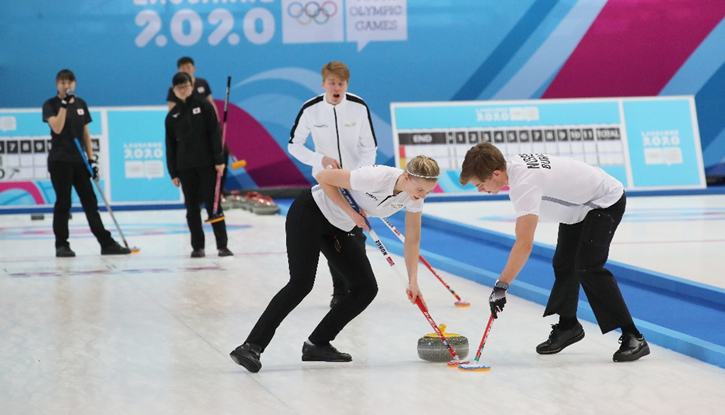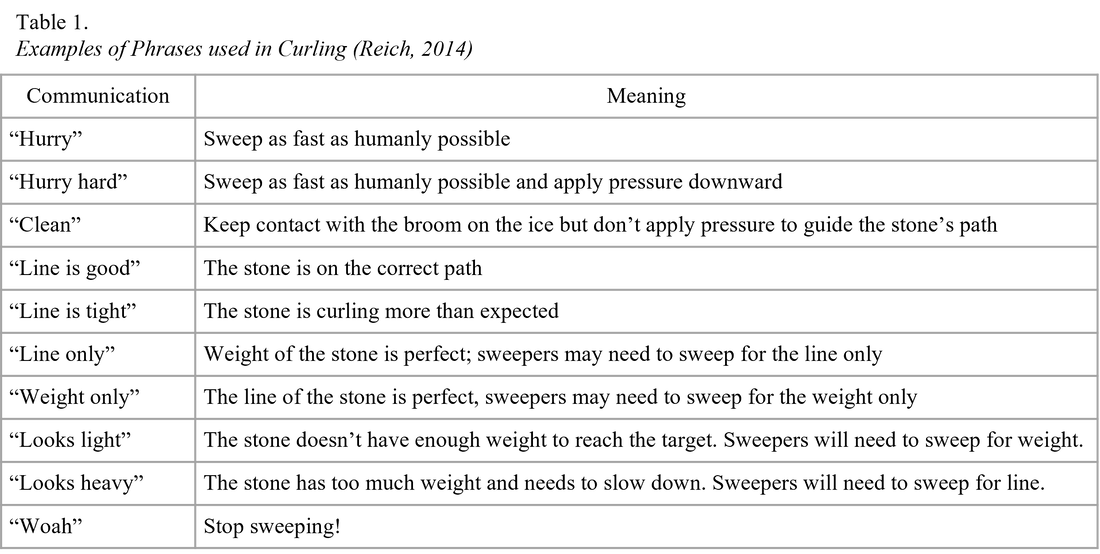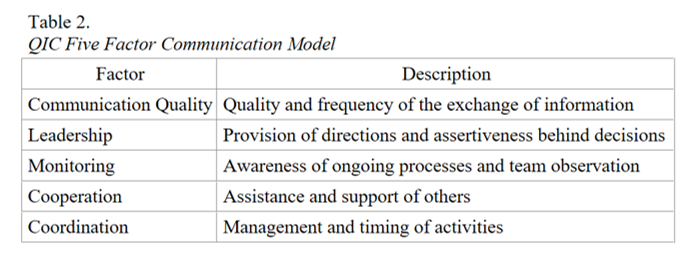 Dr. Michael King; Human Factors Researcher II Dr. Michael King; Human Factors Researcher II The Olympics concluded last week and some of you may have watched the fascinating sport of curling. I don’t know about you, but when I watch curling, I have many questions. Questions such as” “What the heck is going on?” and “How do they keep score?” But the aspect of curling that intrigues me the most is how the curlers communicate. There are moments of silence punctuated by abrupt yelling, and soft talking that becomes full on screaming. It is exciting to watch! But it still begs the questions, what are they communicating and how does this communication help their performance? Let’s start with some basics. Curling is played on a long, narrow sheet of ice with a marked target area, called the house, at each end. Teams typically consist of four players each and each team takes turns sliding heavy granite stones to the opposite end of the ice. The goal is to get your team’s stones closer to the center button of the “house” by pushing the stone and sweeping the ice in front of the stone to keep it moving at the speed and direction you want. The friction from the “sweepers” sweeping polishes the ice, which makes the stone travel farther and straighter (Reich, 2014). However, for sweepers to know how and when to sweep, effective communication is required from the thrower to the sweepers. Before the stone is thrown, the skip (the team strategy leader) should communicate the delivery of the stone with the thrower and sweepers. It is key for the delivering player and the sweepers to make sure they understand this guidance from the skip. If needed, they will discuss and confirm with the skip their understanding of the upcoming shot. The thrower and the sweepers will typically discuss the speed of the ice prior to throws as well. Once the stone is moving, constant communication should take place between the sweepers and the thrower. The sweepers will be responsible for judging the weight of the stone and will regularly communicate their estimation to the skip. The thrower is responsible for judging the stone’s course and should regularly inform the sweepers of that course and their need to sweep or not. Various codes and methods of communication exist to describe the path and weight of the stone. Table 1 provides examples of phrases used in curling between the thrower and the sweepers. So how do we know if a curling team is communicating effectively? We can begin analyzing the communication in terms of an established framework (Jeffcott & Mackenzie, 2008). QIC is currently doing this with Army squad communications during execution of a common battle drill. In this effort, communication between squad members is classified as one of five possible factors: communication quality, leadership, monitoring, cooperation, and coordination. See Table 2 for a description of each factor. Squad scores within each factor are analyzed relative to squad performance metrics. A similar approach can be applied to curling team communications. Communication Quality can refer to the extent that team members are yelling clearly and sufficiently often. Leadership can be measured through whether the skip is making sound decisions and providing clear direction to the thrower. Monitoring may consist of whether the thrower is constantly monitoring the speed and position of the rock, and if the sweepers are actively listening, responding to, and acknowledging the thrower’s direction. Cooperation can be measured by the degree to which the sweepers are working together. Coordination can refer to the implicit coordination between the sweepers and if the skip is providing direction at the right time. Once team communications are organized according to the five factors and validated, the formal analysis comparing communications to curling performance can begin. For instance, how does communication within each of the five factors explain differences in curling team’s performance such as points scored, wins and losses, and time to complete a match? With enough data from different curling teams, a predictive model could be developed to better understand how different types of communication, according to the five-factor framework, can predict actual curling performance. This can have major implications for training and team member selection. What other Olympic sports did you watch where team communications appeared to be an important factor? References
Jeffcott, S. A., & Mackenzie, C. F. (2008). Measuring team performance in healthcare: review of research and implications for patient safety. Journal of Critical Care, 23(2), 188-196. Reich, B. (2014, February 13). Here's everything you ever wanted to know about curling. Mic. Retrieved February 17, 2022, from https://www.mic.com/articles/81947/here-s-everything-you-ever-wanted-to-know-about-curling
1 Comment
|
AuthorsThese posts are written or shared by QIC team members. We find this stuff interesting, exciting, and totally awesome! We hope you do too! Categories
All
Archives
June 2024
|




 RSS Feed
RSS Feed